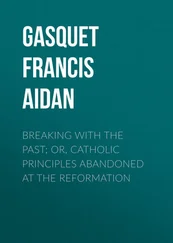Francis Gasquet - The Great Pestilence (A.D. 1348-9)
Здесь есть возможность читать онлайн «Francis Gasquet - The Great Pestilence (A.D. 1348-9)» — ознакомительный отрывок электронной книги совершенно бесплатно, а после прочтения отрывка купить полную версию. В некоторых случаях можно слушать аудио, скачать через торрент в формате fb2 и присутствует краткое содержание. Жанр: foreign_antique, foreign_prose, на английском языке. Описание произведения, (предисловие) а так же отзывы посетителей доступны на портале библиотеки ЛибКат.
- Название:The Great Pestilence (A.D. 1348-9)
- Автор:
- Жанр:
- Год:неизвестен
- ISBN:нет данных
- Рейтинг книги:5 / 5. Голосов: 1
-
Избранное:Добавить в избранное
- Отзывы:
-
Ваша оценка:
- 100
- 1
- 2
- 3
- 4
- 5
The Great Pestilence (A.D. 1348-9): краткое содержание, описание и аннотация
Предлагаем к чтению аннотацию, описание, краткое содержание или предисловие (зависит от того, что написал сам автор книги «The Great Pestilence (A.D. 1348-9)»). Если вы не нашли необходимую информацию о книге — напишите в комментариях, мы постараемся отыскать её.
The Great Pestilence (A.D. 1348-9) — читать онлайн ознакомительный отрывок
Ниже представлен текст книги, разбитый по страницам. Система сохранения места последней прочитанной страницы, позволяет с удобством читать онлайн бесплатно книгу «The Great Pestilence (A.D. 1348-9)», без необходимости каждый раз заново искать на чём Вы остановились. Поставьте закладку, и сможете в любой момент перейти на страницу, на которой закончили чтение.
Интервал:
Закладка:
The new religious spirit found outward expression in the multitude of guilds which sprang into existence at this time, in the remarkable and almost, as it may seem to some, extravagant development of certain pious practices, in the singular spread of a more personal devotion to the Blessed Sacrament, to the Blessed Virgin, to the Five Wounds, to the Holy Name, and other such manifestations of a more tender or more familiar piety. Even the very adornment and enrichment of the churches, so distinctive of this period, bears witness to the change. At the close of the fourteenth century and during the course of the fifteenth the supply of ornaments, furniture, plate, statues painted or in highly decked "coats," with which the churches were literally encumbered as time went on, proved a striking contrast to the comparative simplicity which characterised former days, as witnessed by a comparison of inventories. Moreover, the source of all this wealth and elaboration is another indication of the change that had come over the country. Benefactions to the Church are no longer contributed entirely, or at least chiefly, by the great nobles, but they are now the gifts of the burgher folk and middle classes, and this very profusion corresponds, according to the ideas and feelings of those days, to the abundant material comfort which from the early years of the last century to the present has specially characterised the English homes of modern times. In fact, the fifteenth century witnessed the beginnings of a great middle-class movement, which can be distinctly traced to the effect of the great pestilence, and which, whether for good or for evil, was checked by the change of religion in the sixteenth century.
It is sufficient here to have indicated in the most general way the change which took place in the religious life of the English people and the new tendencies which manifested themselves. If the later religious history of the country is to be understood it is necessary to take this catastrophe, social and religious, as a starting-point, and to bring home to the mind the part the Black Death really played in the national history.
Merely to report what is said of England would tend to raise in the mind of the reader a certain incredulity. A short and rapid review has accordingly been made of the progress of the pestilence from Eastern Europe to these Western shores, and by this means the very distressing unanimity, even to definite forms of language, of writers who recorded events hundreds and even thousands of miles apart, brings home the reality of the catastrophe with irresistible force. The story, so far as England is concerned, is told at greater length, and the progress of the disease is followed as it swept from south to north and passed on to higher latitudes. The state of the country after the pestilence was over is then briefly described, and attention is called to some of the immediate results of the great plague, especially as bearing upon the Church life of the country.
CHAPTER I.
THE COMMENCEMENT OF THE EPIDEMIC
The Great Pestilence, which first reached Europe in the autumn of 1347, is said to have originated in the East some three or four years previously. So far as actual history goes, however, the progress of the disease can be traced only from the ports of the Black Sea and possibly from those of the Mediterranean, to which traders along the main roads of commerce with Asiatic countries brought their merchandise for conveyance to the Western world. Reports at the time spoke of great earthquakes and other physical disturbances as having taken place in the far East, and these were said to have been accompanied by peculiar conditions of the atmosphere, and followed by a great mortality among the teeming populations of India and China. Pope Clement VI. was informed that the pestilence then raging at Avignon had had its origin in the East, and that, in the countries included under that vague name, the infection had spread so rapidly, and had proved to be so deadly, that the victims were calculated at the enormous, and no doubt exaggerated, number of nearly four-and-twenty millions.
A Prague chronicle speaks of the epidemic in the kingdoms of China, India, and Persia, and the contemporary historian, Matteo Villani, reports its conveyance to Europe by Italian traders, who had fled before it from the ports on the eastern shores of the Black Sea. The same authority corroborates, by the testimony of one who had been an eye-witness in Asia, the reports of certain Genoese merchants as to earthquakes devastating the continent and pestilential fogs covering the land. "A venerable friar minor of Florence, now a bishop, declared," so says Villani, "that he was then in that part of the country at the city of Lamech, where by the violence of the shock part of the temple of Mahomet was thrown down." 2 2 Muratori, Rerum Italicarum Scriptores , xiv, col. 14.
A quotation from Hecker's "Epidemics of the Middle Ages" will be a sufficient summary of what was reported of the plague in eastern countries before its arrival in Europe. "Cairo lost daily, when the plague was raging with its greatest violence, from 10 to 15,000, being as many as, in modern times, great plagues have carried off during their whole course. In China more than thirteen millions are said to have died, and this is in correspondence with the certainly exaggerated accounts from the rest of Asia. India was depopulated. Tartary, Mesopotamia, Syria, Armenia were covered with dead bodies; the Kurds fled in vain to the mountains. In Caramania and Cæsarea none were left alive. On the roads, in the camps, in the caravansaries unburied bodies were alone to be seen… In Aleppo 500 died daily; 22,000 people and most of the animals were carried off in Gaza within six weeks. Cyprus lost almost all its inhabitants; and ships without crews were often seen in the Mediterranean, as afterwards in the North Sea, driving about and spreading the plague wherever they went ashore." 3 3 The Epidemics of the Middle Ages , translated by B. G. Babington (Sydenham Society), p. 21.
There can be little doubt that the contagion was first spread by means of the great trade routes of the East. The lines of commerce of European countries with India, China, and Asiatic countries generally are first definitely described in 1321 by Marino Sanudo, a Venetian, in a work addressed to Pope John XXI., not thirty years before the outbreak of the pestilence. 4 4 Marinus Sanutus, Liber secretorum Fidelium crucis super Terræ Sanctæ recuperatione et conversatione , in Bongars, Gesta Dei per Francos , vol. ii.
His object was to indicate the difficulties and dangers which then beset the traffic of the mercantile world with the East. In so doing he pointed out that the ancient centre of all trade with the far East was Bagdad. To and from this great depôt of Oriental merchandise all the caravan routes led; but, at the time when Sanudo wrote, the incursion of barbarian hordes into Central Asia had rendered trade along these roads difficult and unsafe. Two trading tracts are in particular named by the author as the chief lines of communication. One ran from Bagdad over the plains of Mesopotamia and Syria to Lycia, 5 5 The most southern part of Asiatic Turkey.
where the goods were purchased by the Italian merchants. This, the best known route, was the shortest by which the produce of China and India could be conveyed to the European markets; but in the fourteenth century it was the most perilous. The second route also started from Bagdad, and having followed the Tigris to its sources in Armenia, passed on either to Trebizond and other ports of the Black Sea, or taking the road from the Caspian, upon the other side of the Caucasus, passed to the Genoese and other flourishing Italian settlements in the Crimea.
Интервал:
Закладка:
Похожие книги на «The Great Pestilence (A.D. 1348-9)»
Представляем Вашему вниманию похожие книги на «The Great Pestilence (A.D. 1348-9)» списком для выбора. Мы отобрали схожую по названию и смыслу литературу в надежде предоставить читателям больше вариантов отыскать новые, интересные, ещё непрочитанные произведения.
Обсуждение, отзывы о книге «The Great Pestilence (A.D. 1348-9)» и просто собственные мнения читателей. Оставьте ваши комментарии, напишите, что Вы думаете о произведении, его смысле или главных героях. Укажите что конкретно понравилось, а что нет, и почему Вы так считаете.












